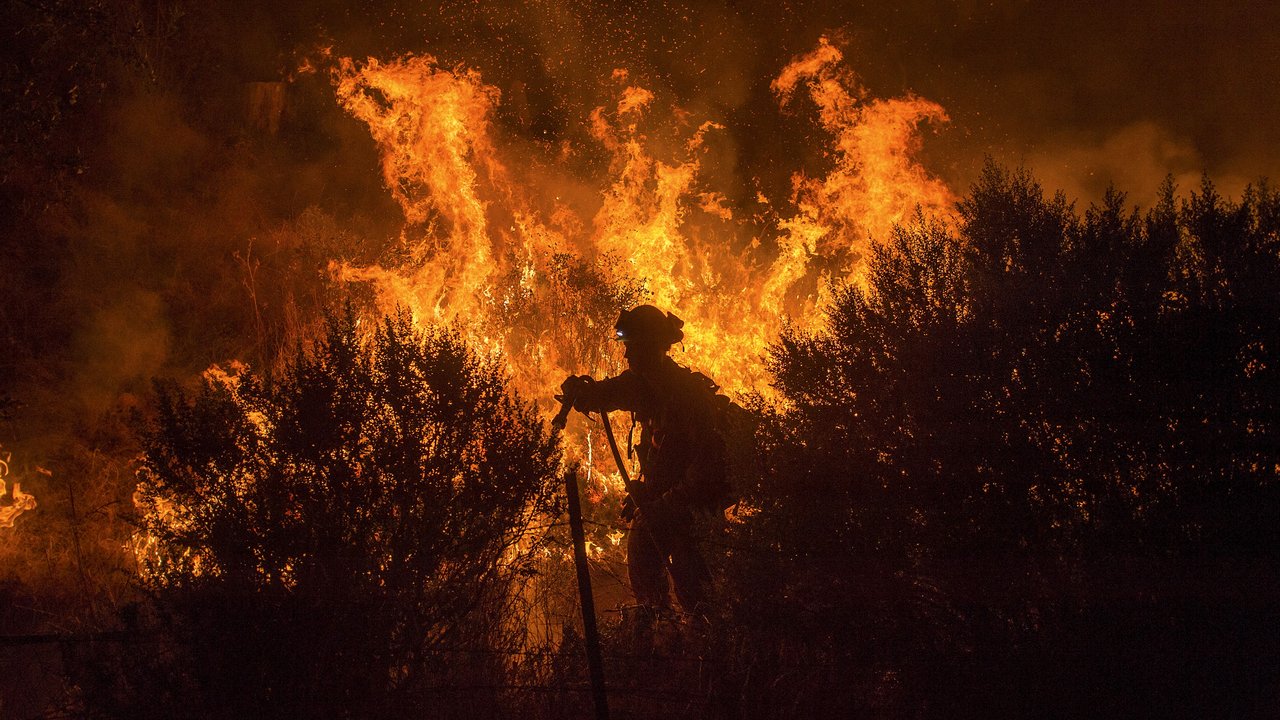
312.7k
CA acres burned in 2023 by October
14+k
Acres burned in Tracy, CA wildfire
1.57m
Average acres burned by October each year
California’s wildfire season may have been tamer in 2023, but other states saw increased risk.
“The insurance crisis that we are experiencing in California is starting to spread into other states with similar risk, where it may not have been top of mind previously,” said Rachael Dougherty, senior underwriter and West Coast territory lead, E&S property, Munich Re Specialty.
“That’s by nature driving a lot more business into the E&S market — not just in California but in areas like New Mexico, Colorado, the Pacific Northwest, Texas, and Hawaii.”
The financial strain of expanding wildfire exposures is causing a number of carriers to cease offering coverage in states where the risk is heightened. Others are tightening their terms and conditions and raising rates to account for increased losses from the peril. This is leading a number of insureds to increase their investments in risk management — and to turn to E&S markets in search of coverage.
The expanding wildfire risk map pushes insureds to E&S
California was one of the first states to see standard line carriers pull out of property markets due to wildfire risks. Last year, State Farm, the largest homeowners insurance company in the state, announced that it would no longer be offering coverage anywhere in the state. On the commercial side, it’s not uncommon for property rates to double or even triple. Some have seen increases as high as 400%, the Orange County Register reported in May.
“Before, they were just pulling out of certain areas. Now, they’re pulling out of the whole state,” Dougherty said. “Even if you’re in a non-wildfire exposed area, chances are you’re still at risk of being non-renewed.”
If an insured is trying to put together coverage for a high-value property in a wildfire-prone area, they could be working with 10 or more carriers in order to secure it. If even a few insurers on the program tighten their terms, they could have to restructure the whole thing. Many are seeking out coverage from E&S or London markets to try to find more stability.
“If you have to restructure all of that every year, it’s really hard,” Dougherty said. “There’s definitely still a huge flow of business into the E&S market as standard lines carriers pull out even more.”
Dougherty has seen a surge of interest in E&S markets for wildfire risk, but she cautions that not all exposures might be a logical fit for its products. E&S is built for high-severity losses, so underwriters need to carefully price risk and manage their capacity.
“It’s kind of like putting stitches on a paper cut,” Dougherty said. “The E&S market isn’t designed to cover every single risk in California. We are a specialty market.”
Still, E&S carriers are stepping up to help many find needed coverage, and they have a wealth of knowledge of wildfire risks. For insureds in California especially, it could be the answer to a lot of problems they’re facing with the current market.
“It’s very challenging for insureds in the state right now. We’re doing everything we can to help,” Dougherty said. “We’re very comfortable in the wildfire market.”
Risk mitigation that works
115m
People living in counties
with high wildfire risk
48m
Building in high wildfire risk counties
But while it is unpredictable, wildfire is also a Nat CAT peril with many effective risk reduction tools.
“It’s one of the perils that you can actually protect your property against with mitigation,” Dougherty said. “We’re definitely seeing investment in defensible space and structure hardening measures, including noncombustible roofs hardscaping and specially designed vents that prevent embers from coming in.”
Wineries in particular have found success in protecting their properties from California’s flames. Vintners have a heightened interest in protecting their properties from wildfires, because if flames scorch their crops, they can lose entire vintages. They’ve invested in redesigning their landscaping to make the property less vulnerable and hardening buildings against wildfire risk.
Dougherty knows of one winery that removed beautiful Italian cypress trees from its property because “they’re basically like birthday candles for wildfire.”
“We’re seeing a lot of investment in making sure that they’re doing everything they can to create defensible space around the building and then hardening the building itself.”
Five ways to mitigate wildfire risk
Create defensible space
Harden buildings
Redesign landscaping
Partner with local fire departments
Consult with their E&S carrier
Retail brokers often advise their clients to make changes to protect their properties from wildfires, but E&S carriers can offer this guidance too. They’ll review reports from consultants and offer advice to improve risk management. Dougherty recommends making a plan with local fire departments in addition to investing in upgrades that protect buildings.
“One thing that we need to think about is whether the fire department can get to you and whether they know where the water source is,” she said. “Do they have a map of my property? Where is my extra water source? Do they know where the hookup is?”
Wildfire is a long-term risk.
You need a long-term carrier
The team at Munich Re Specialty focuses on underwriting for long-term partnerships, not trends that could come and go. Even as meteorologists predict a milder wildfire season this year, there is concern regarding 2025, in part because of the anticipated switch from El Niño to La Niña, two climate and wind patterns in the Pacific Ocean that affect weather worldwide.
“It’s so important to keep rates adequate in the market right now, because although it may not be very bad this year, the potential for a more severe wildfire season exists in 2025,” Dougherty said.
That forward-looking approach allows Munich Re Specialty to remain a stable partner for insureds — a trait many value when purchasing policies becomes increasingly challenging.
“We want to make sure that we can sustain our book in order to service our clients better,” Dougherty said. “We don’t want to have to change our underwriting perspective or cut back on lines or not renew policies or pull out of markets, so we’re going to remain conservative.”
Downloads and articles
Experts

Related solutions
properties.trackTitle
properties.trackSubtitle
